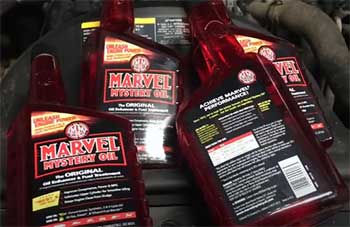When it comes to keeping your car’s engine in top shape, you’ve probably come across a range of oil treatments claiming to boost performance, extend engine life, and even improve fuel efficiency.
Among them is STP Ceramic Oil Treatment, a product that promises to reduce friction, protect against engine deposits, and keep your car running smoother for longer.
In this article, I’ll share my personal experience with the STP Ceramic Oil Treatment, highlight its pros and cons, and compare it to other brands.
By the end of this review, you’ll have a clear idea if this product is right for you, where to buy it, and how it stacks up against other options in the market.
My Experience With STP Ceramic Oil Treatment

When I first came across this product, I was intrigued by the idea of ceramic coating inside an engine.
It sounded like something that could offer my car a bit more longevity, especially with all the promises around reduced friction and noise.
I’ve been driving a 2008 Acura MDX for years now, and while it’s a reliable car, it’s starting to show signs of age—especially in the engine’s performance.
The engine was a bit noisy, and I was concerned about wear and tear, especially with over 140,000 miles on it.
After some research and reading reviews, I decided to give STP Ceramic Oil Treatment a shot.
- After the First Oil Change
I added the STP Ceramic Oil Treatment during my last oil change, using it with a synthetic oil—Pennzoil Platinum 5w30. I noticed a change almost immediately after starting the engine. The first thing I noticed was a significant reduction in noise.
The usual ticking sound that comes from the lifters during idle was gone, and the engine ran quieter and smoother overall.
Another benefit I noticed was how the engine felt during acceleration. It seemed more responsive, almost like it had a bit more pep.
Of course, I can’t say for sure if it increased horsepower, but the car certainly felt smoother when driving and accelerating, especially at higher speeds. This made highway driving feel a lot less stressful on the engine.
Pros of STP Ceramic Oil Treatment
Based on my experience and other customer reviews I came across, here are the top benefits of using STP Ceramic Oil Treatment:
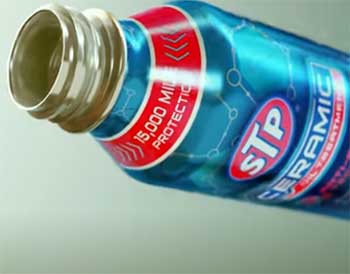
- Reduced Engine Noise: One of the most immediate benefits was the reduction in engine noise. Whether it’s the ticking sound at idle or general engine noise, the ceramic treatment worked to quiet things down noticeably. In older cars or cars with high mileage, this can be a game-changer.
- Smoother Performance: Adding the STP Ceramic Oil Treatment gave my engine a smoother performance. The engine feels more fluid, with less friction between the moving parts. This has made driving much more enjoyable, especially when accelerating or driving long distances.
- Longevity: The ceramic coating from this treatment is designed to last up to 15,000 miles, which is a big plus for anyone who wants lasting protection. It stays active even after oil changes, continuing to reduce friction and wear over time.
- Improved Fuel Efficiency: Although the product claims to improve fuel efficiency, I didn’t notice a significant difference in miles per gallon (MPG). However, some users have reported better mileage after adding this product. It’s possible that in more optimal conditions, this could contribute to better fuel efficiency.
- Versatility: The STP Ceramic Oil Treatment is compatible with both conventional and synthetic oils, making it a versatile choice for various types of engines. Whether you have a gasoline or diesel engine, this product can work for you.
Cons of STP Ceramic Oil Treatment
While the product has plenty of pros, there are also a few drawbacks worth noting.
- Minor Impact on Fuel Efficiency: Despite the product’s claim to improve fuel mileage, I didn’t see a noticeable difference in this area. This could be due to various factors, such as driving habits and conditions, but it’s something to keep in mind if better fuel economy is your primary goal.
- Higher Price Point: Compared to some other oil treatments, the STP Ceramic Oil Treatment is on the pricier side. This might make some people hesitant, especially if they’re not fully convinced of the benefits.
- Not a Miracle Worker: It’s important to manage expectations with this product. While it offers a smoother engine and quieter operation, it won’t completely transform a very old or severely damaged engine. If your car has deep-seated engine issues, this treatment might help reduce wear and tear, but it won’t solve all the problems.
Tips For STP Ceramic Oil Treatment
Maintaining your engine after using the STP Ceramic Oil Treatment is fairly simple. Here are a few tips to help you get the most out of the product:
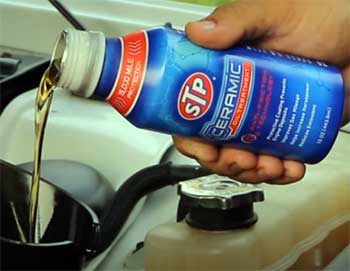
- Use It During Every Oil Change: For optimal results, you should use the STP Ceramic Oil Treatment during each oil change. Since it protects for up to 15,000 miles, it’s ideal to add it when you’re replacing your oil, whether you’re doing it yourself or at an auto service shop.
- Pair It with Synthetic Oil: Although the treatment is compatible with both conventional and synthetic oils, I found that it works best when paired with synthetic oil, like Pennzoil Platinum. Synthetic oils provide better overall protection and performance, especially in high-mileage engines.
- Monitor Your Engine: After adding the ceramic oil treatment, keep an eye on your engine’s performance. Listen for any changes in noise, vibrations, or smoothness. While the product is designed to reduce friction and improve performance, it’s always good practice to be attentive to how your engine behaves.
- Follow the Manufacturer’s Guidelines: Be sure to follow the oil change intervals recommended by your car’s manufacturer. While the ceramic coating stays active after an oil change, regular maintenance is crucial to keeping your engine in good condition.
Comparing STP Ceramic Oil Treatment To Other Brands
When it comes to oil treatments, there are several competitors on the market. Let’s see how STP Ceramic Oil Treatment stacks up against a few popular options:
- Prolube Oil Treatment
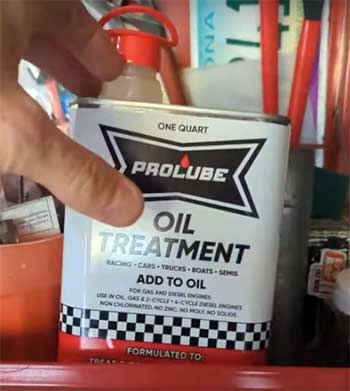
Prolube Oil Treatment is a solid contender known for its affordability and widespread availability.
It focuses on reducing engine wear and helping to minimize oil consumption in older engines.
However, unlike STP Ceramic Oil Treatment, Prolube does not offer the long-lasting ceramic protection that coats the engine’s moving parts.
While Prolube is effective at reducing engine friction and improving oil performance, the lack of ceramic technology means that the effects don’t last as long as those with STP.
If you’re looking for immediate results at a lower price point, Prolube might be worth considering, but for long-term protection, STP’s ceramic component gives it the upper hand.
- Slick 50 High-Mileage Treatment
Slick 50 is a well-known name in the world of oil treatments, especially for high-mileage vehicles. Its primary focus is on reducing engine friction and wear, much like STP Ceramic Oil Treatment. However, Slick 50 differs in that it doesn’t contain ceramic particles.
Instead, it uses PTFE (polytetrafluoroethylene) to coat and protect engine components. While PTFE is effective, it may not provide the same level of high-temperature protection as ceramic SiO2. Additionally, some users have reported that PTFE can cause sludge build-up over time.
- Motor Honey Oil Treatment
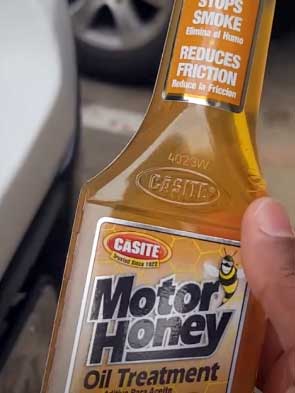
Motor Honey Oil Treatment is another product that targets older engines, aiming to reduce oil leaks, increase viscosity, and quiet engine noise.
In many ways, it’s similar to Prolube, providing a more budget-friendly option for drivers.
One of the main advantages of Motor Honey is its thickening properties, which can help reduce oil leaks in older engines.
However, this thicker consistency can sometimes lead to reduced fuel efficiency and hinder engine performance, particularly in colder temperatures.
STP Ceramic Oil Treatment, on the other hand, uses its anti-friction ceramic technology without affecting the oil’s viscosity too much.
This makes STP a better option for those who want a smoother engine performance without sacrificing fuel economy. Motor Honey may help stop leaks and quiet noise, but for a cleaner, longer-lasting solution, STP’s ceramic coating is a clear winner.
Frequently Asked Questions (FAQ)
Yes, ceramic engine treatments, like STP Ceramic Oil Treatment, work by reducing friction between metal parts, improving lubrication, and protecting against wear. The ceramic coating remains even after oil changes, providing long-lasting protection and smoother engine performance.
STP Ceramic Oil Treatment is an engine additive designed to reduce friction, improve lubrication, and extend engine life. It uses ceramic SiO2 technology to create a protective coating inside the engine, which remains effective for up to 15,000 miles.
Yes, STP oil treatment helps by reducing engine noise, improving performance, and protecting against wear and tear. It’s particularly beneficial for high-mileage or older vehicles, but it can be used in any engine that needs extra protection.
You can use STP oil treatment with each oil change or as recommended by your vehicle’s manufacturer. Since the ceramic coating lasts for up to 15,000 miles, it’s best to use it during every oil change to maintain consistent protection.
Conclusion: Is STP Ceramic Oil Treatment Worth It?
After using STP Ceramic Oil Treatment, I can confidently say that it’s a solid investment for anyone looking to extend the life of their engine. The reduction in noise, smoother performance, and long-lasting protection make it a great choice for both newer and older vehicles.
While it’s not a miracle cure for deeply troubled engines, it does offer noticeable improvements in terms of friction reduction and overall engine performance.
If you’re considering trying out an oil treatment, I highly recommend giving STP Ceramic Oil Treatment a try. You can find it at your local automotive stores or order it online from trusted retailers like Amazon or AutoZone.
In the long run, a little extra care with products like this can go a long way in keeping your engine running smoothly and efficiently.
